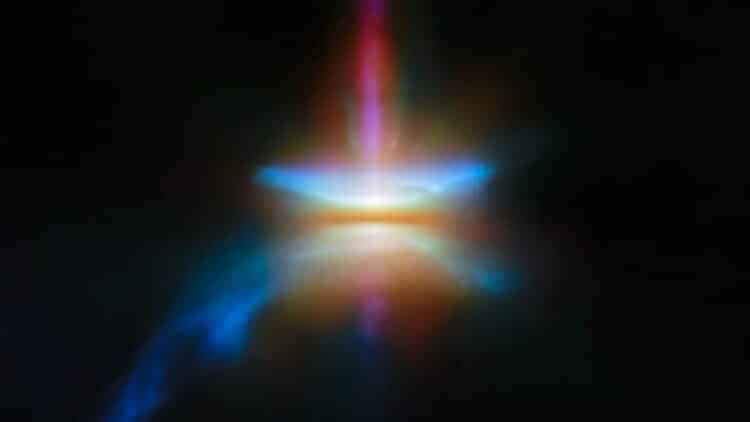Since we began observing the universe with more powerful telescopes, we’ve become accustomed to numerous surprises, but some discoveries truly defy imagination. That’s exactly what happened recently: an enigmatic, compact, extremely bright orb, hidden in a nearby galaxy, appeared in astronomers’ data. It doesn’t resemble any star ever seen, nor typical cosmic explosions. It’s also not a supermassive black hole, at least not as we currently understand it. It’s something different. Something that seems to shine impossibly.
An ‘enigmatic orb’ outshines almost everything we know in the cosmos
In the heart of a galaxy 11 million light-years from Earth, researchers found what they began calling the “enigmatic orb.” But this temporary name soon gained an official identity, which we’ll learn more about later. This orb, when placed alongside other cosmic phenomena, not only draws attention, but practically blows away any comparison, because it is:
- 10,000 to 100,000 times brighter than a typical magnetar.
- About 100 times brighter than microquasars.
- Up to 100 times brighter than almost all known supernovae.
It’s worth noting that the only object still larger than this within our galaxy is the legendary Crab Nebula (the remnant of an explosion recorded in the year 1054). And what we know so far is:
- The object is located in the galaxy NGC 4945.
- It has been named Punctum.
- The object only appears at millimeter wavelengths, invisible at other wavelengths.
- Its light is strongly polarized, a clear sign of a highly organized magnetic field.
- And, unlike rapid bursts or transient events, its brightness is consistent across multiple observations.
Punctum challenges every cosmic label we’ve ever used
The big issue is that when a mystery arises, astronomers always try to compare it to already cataloged phenomena. However, in this case, no comparison is entirely accurate. This is because when compared to magnetars and pulsars, we see that they have extremely strong magnetic fields and emit synchrotron radiation, exactly what we see in Punctum. But there’s a problem: no magnetar reaches this level of brightness in millimeter waves. It’s like comparing a candle flame to a stadium spotlight.
If we compare them to supernovae and nebulae, taking the Crab Nebula, which is bright in virtually all radiation bands, we see that these structures are vast, reaching several light-years in diameter. Punctum, on the other hand, is compact, which makes this hypothesis unlikely. Finally, speaking of microquasars, which are binary systems with black holes or neutron stars that emit jets of energy, even the brightest are 100 times brighter than Punctum. All these comparisons mean that Punctum has a bit of every known phenomenon, but is not identical to any of them. Just like this ‘strange’ aquatic, glowing life form visible from space that NASA just detected.
Punctum might be the first glimpse of an undiscovered cosmic class
Given these unsuccessful comparisons, the boldest hypothesis remains: perhaps we’re looking at a new class of astrophysical object. This would make sense, after all, the ALMA telescope is extremely sensitive at millimeter wavelengths. And, until now, we haven’t had instruments capable of revealing something so discreet and yet so energetic. In other words, Punctum may be just the first of many, hidden away, waiting for the right technology to reveal them.
Now, what everyone is eagerly awaiting is what the James Webb Space Telescope (JWST) can reveal to us. It will be able to investigate whether there is infrared emission, or even signs of dust and emission lines that could help classify Punctum. The answers it provides could radically change the way we understand not only this object, but an entire hidden slice of the universe. Just as the telescope found evidence of life that, according to experts, “should not be there.”


